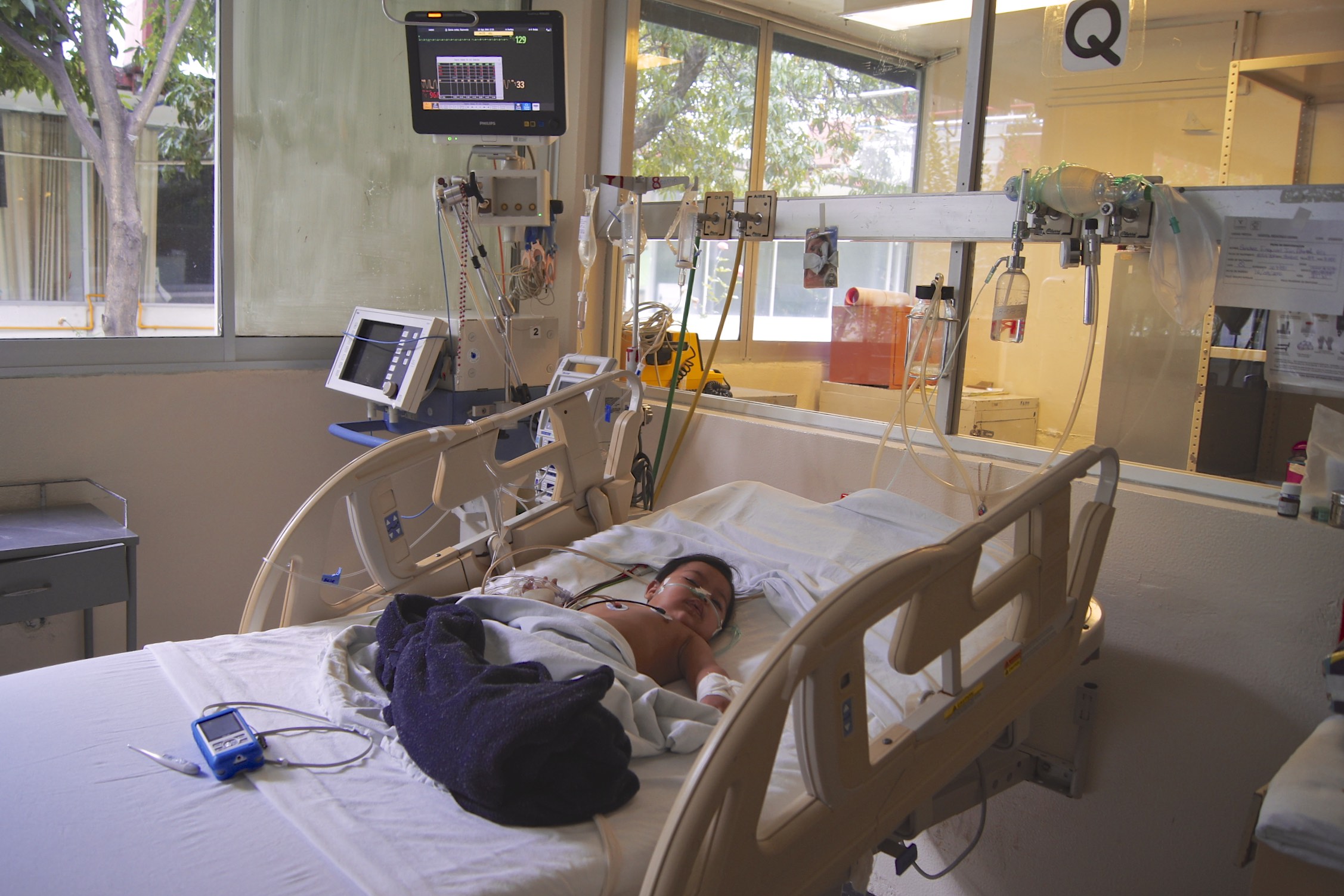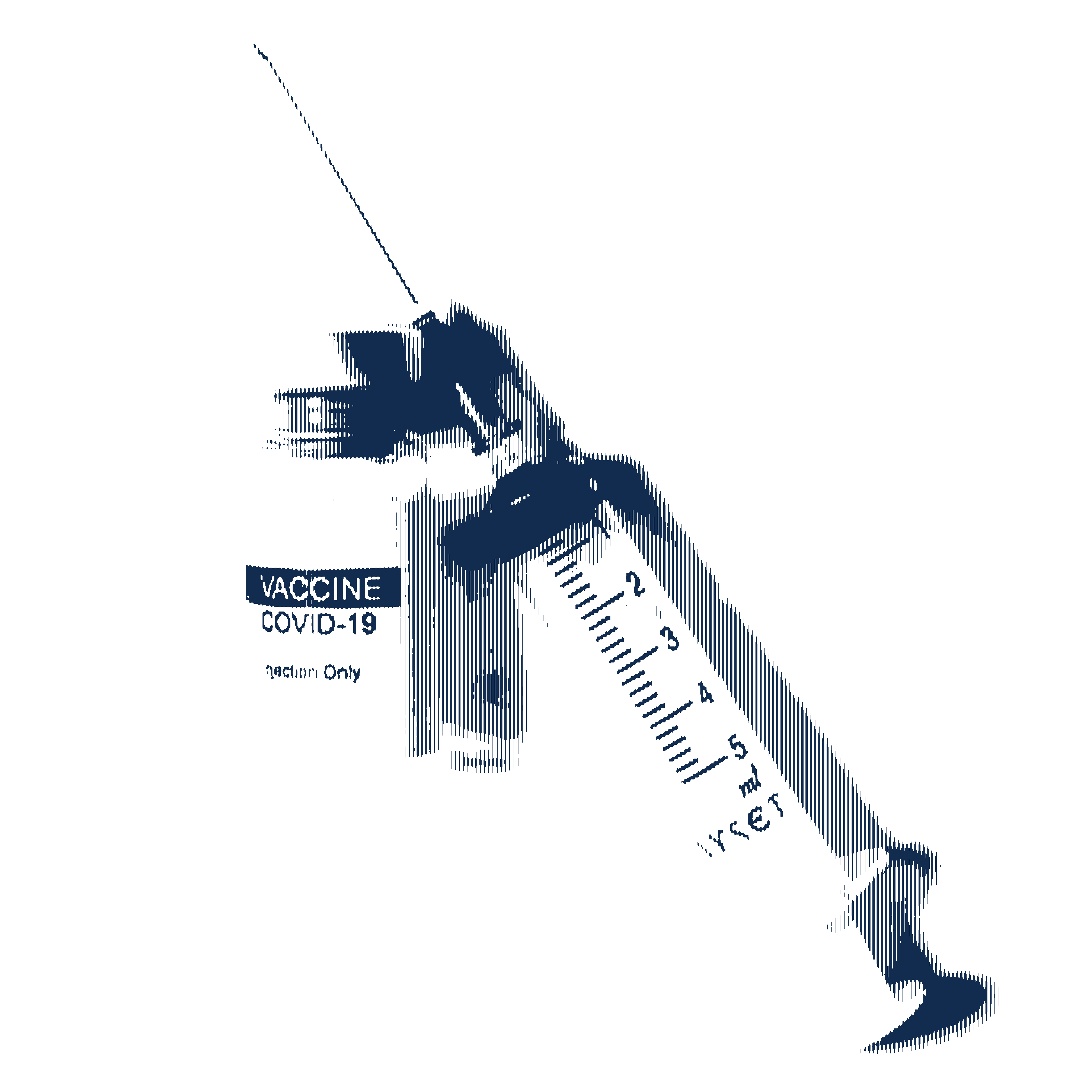
Contemporary buildings tower and colorful houses sit atop the hills as sunlight struggles to pierce the polluted air. Cars bustle and screech as millions make their way to work, school, and the streets.
Mexico City is comprised of zones with drastic differences in economic status. When walking down Masaryk in Polanco, one of the city's wealthiest zones, it become clear that the poverty-stricken zones are cloaked by a veil of luxury and opportunity.
Designer shops from Louis Vuitton to Dior pocket the sidewalks. The majority of the population who sell street goods and live a day-to-day existence are often overlooked and forgotten by the passersby soaking in the false illusion of a city in bliss.
Just three blocks away on the outskirts of Polanco, sits Hospital Pediátrico Legaría—a public hospital and member of the Secretariat of Health medical coverage network. A woman hobbles back and forth. Just as the claim of universal health coverage deceives the common man, a tenuous plastic bag disguises her wound.
Hospital Pediátrico Legaría is a pediatric neurological center with a mission to "make the right of health a reality and advance the various programs established by the Secretariat of Health." Hospital directors aspire towards "cutting edge technology, with the highest quality of pediatric services and human treatment"—they would like their hospital to become "a leader in neurological and neurosurgical care."
Dr. Alfredo Sanchez Cruz is one of the dedicated physicians who works within the public healthcare system. He says that he "aspires to treat Mexico's most vulnerable and poverty stricken patients." On an overcast afternoon, Dr. Cruz received a call from Hospital San Jose. He was informed of the transfer of a baby boy with suspected viral meningitis. Ian Ahmed Sanchez Esquivel's parents, young 20-year-olds, could not afford the private care from Hospital San Jose. Six hours passed, and the baby boy had yet to arrive. The daily evening rainfall began to flood the streets, meaning the ambulance's screeching siren would not reach Hospital Pediátrico Legaría for several hours.
"Caramelos, cigarras, caramelos, cigarras…" A daily chant heard on every streetcorner. Beggars roam the entrance. Taxis and rickety cars bustle by as patients' families sit on a wall outside the hospital. The police officer greets visitors with a friendly "of course, welcome."
A dozen blue seats filled with anxiously waiting parents and spirited giggling siblings create a mixed sensation of happiness and despair. At nightfall, the waiting room transforms into a makeshift dormitory carpeted with cardboard boxes for beds. Every child in the intensive care unit requires the presence of one parent at all times, thus decommissioning parents from work. Sunlight floods the hallway exposing the clean yet minimalistic hospital aesthetics as all resources are allotted for treatment.
Although nearly all resources are allocated for treatment, the technology available is often outdated. "The situation is that in the public hospitals we simply don't have the same technology, and the patients are well aware," said Dr. Cruz. Brain trauma's most valuable piece of equipment is the Magnetic Resonance Imaging (MRI) machine. At Hospital Pediátrico Legaría, an MRI machine was nowhere to be found.
A baby girl arrived at Hospital Pediátrico Legaría with almost complete paralysis. She needed neostigmine, a paralysis reversal drug that must be administered within two days of the onset of paralysis. Medical staff solicited a request to the Secretariat of Health. This took five days. The medical staff expressed that in emergency situations, the process to obtain necessary medication or equipment takes too long. In most cases, as for this baby girl, the request is an empty pursuit. It is too often too late.
On paper all citizens have access to basic healthcare services, but the level of care varies between the private and public healthcare division. Through Seguro Popular, the government expanded coverage to include 50 million previously uncovered civilians. Public programs operated by Seguro Social (IMSS), the Secretaria de Salud, and the Instituto de Seguridad y Servicios Sociales de los Trabajadores del Estado (ISSSTE) falsely establish a universal healthcare system. Dr. Cruz commented that while government care has expanded access, many hospitals throughout the country require additional staff and technological improvements because of the lack of resources apportioned to Mexico's health infrastructure.
Mexican, American, and British flags sit atop a towering mirrored building waving in the breeze to welcome all hospital visitors. Cadillacs and BMWs crowd the parking lot. Starbucks Coffee and Krispy Kreme are bustling with wealthy visitors. The police officers securing the hospitals on every corner request credentials and check bags.
Plush sofas brightly welcome patients and families. High ceilings, impeccably clean floors, and interior detailing expose the resources allotted to aesthetics. This is The American British Cowdray Medical Center—one of the national private hospitals that targets the wealthiest segment of the Mexican population.
More impressive than the aesthetics was the advanced level of medical technology. In June 2016, the hospital opened a state of the art stimulation center for surgical and clinical practice offering skilled training for innovative medical technology provided by leading biomedical engineering companies. These technological advances are constantly evolving to improve the health of "all" people. However, as the medical technology continues to advance in these privileged locations, the gap between those with and without access widens, so that "all" people are not served.
Six-month-old Ian would likely never have the chance to be treated in a hospital like the American British Cowdray Medical Center. When Ian finally arrived at the hospital Dr. Cruz performed a spinal tap on him to test for meningitis. The test was negative. It was discovered that Ian was experiencing severe complications from gastroenteritis.
Sixty percent of patients who arrive at Hospital Pediátrico Legaría are admitted for complications that follow this series of events: gastroenteritis, severe vomiting, severe dehydration, hypovolemic shock, and encephalopathy (disorder of the brain). At Hospital Pediátrico Legaría this course of events commonly leads to cerebral palsy. Ian would likely never see, hear, or move autonomously from irreversible brain damage.
Ian's case is far too common. Dr. Cruz commented that the available economic resources should allow for technology found in the most advanced hospitals in the world. This would prevent outcomes like Ian's. However, he said, "these resources do not go where they need to go, this is the problem." While the news and media suggest that Mexico has the 15th largest economy in the world, in reality this isn't true, he says. "When 60 percent of Mexico is poor and without stable work and 40 percent of these people are marginally poor meaning they will likely die of hunger; this is not exemplary of a leading country."
Private hospitals promote rapid technological development and encourage companies like Medtronic and Johnson & Johnson to increase their market share in Mexico. However, these private hospitals cater to an elite segment of society.
Large initiatives and investments into the healthcare system have yet to reap the benefits. While Mexico has one of the highest rates of coverage, the coverage is insufficient. As Dr. Cruz said, "the entire system of health needs to be modified, so that the majority of patients in need can receive care."





